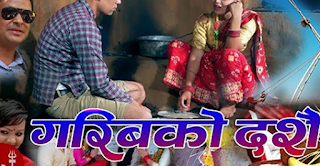Jhilama Phulu...|| Sugandha || Ashok Darji || Ft. Smile Dhimal (Bhuikatahare )
Among the Newa of the Nepal mandal Kathmandu valley Dashain is praised as the most critical celebration of as Nepal sambat date-book year.[5] Among the Hindus and Buddhist Newars, it is commended with slight contrasts and elucidations, where every nine days Navaratri (Nepal Bhasa: paving the way to the tenth day called 'Dashami' convey unique importance.[6] The goddess Durga and her different indications are particularly worshiped by Hindu Newars all through the Shaktipeeths of Kathmandu Valley. Among Newars, Mwohni is likewise essential for its accentuation on family social occasions and in addition on a recharging of network ties, featured by exceptional family meals called Nakhtyā (Nepal Bhasa: नख्त्या) and different network parades of divinities called Jātrā (Nepal Bhasa: all through the three regal urban areas of Kathmandu Valley.[2]
Dashain ( Daśãi, India and Nepal or <b>Baḍādaśãi </b>, likewise Bijayā Daśamī ) is the Nepali form of Durga Puja , a fifteen-day-long celebration of Shaktism in South Asia. It is commended by individuals of Hindu religion in Nepal and the ethnic हिन्दू Nepali individuals of Indian slope conditions of Sikkim, Assam and Darjeeling district[2] and among the Lhotshampa of Bhutan[3] and the Burmese Gurkhas of Myanmar.



